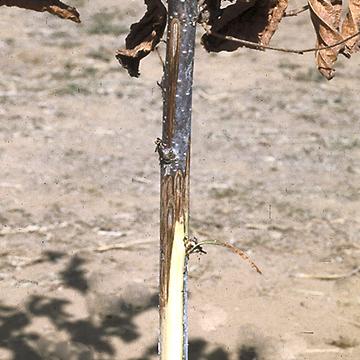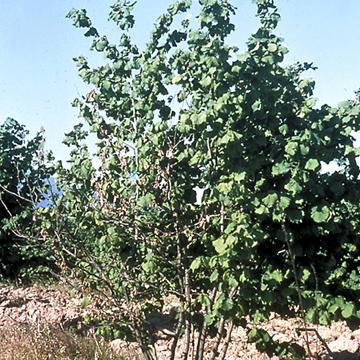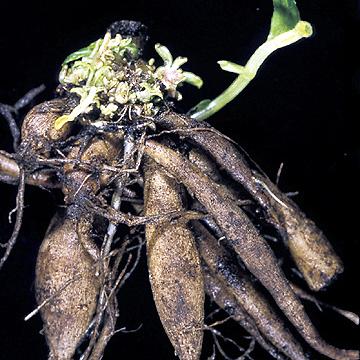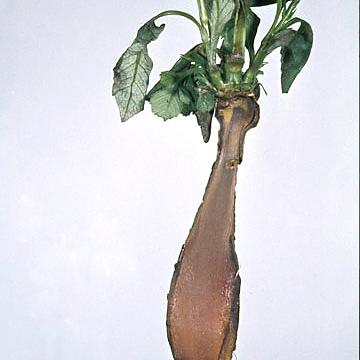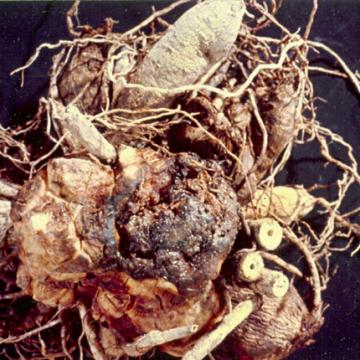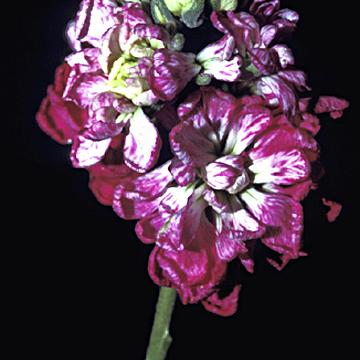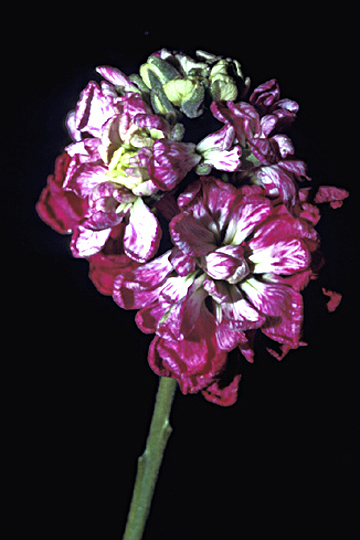DISEASE: Bacterial blight
HOST: Hazelnut
Diseased young tree with discoloration of the cambium. Dieback of young twigs and branches is characteristic. Other typical symptoms are bud and twig necrosis and small, angular or round, water-soaked leaf spots.
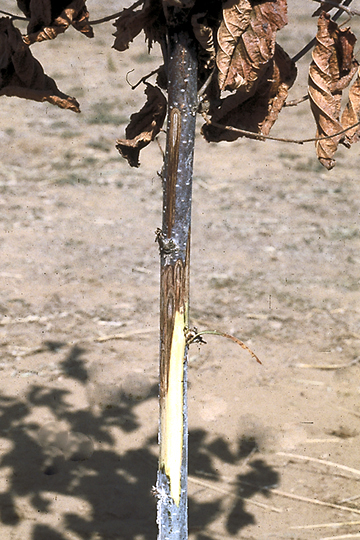
Bacterial blight | Hazelnut
DISEASE: Bacterial blight
HOST: Hazelnut (Corylus americana)
PATHOGEN: Xanthomonas arboricola pv. corylina
SOURCE: J. Pscheidt
DISEASE: Bacterial canker
HOST: Hazelnut
Primary symptoms are failure of buds to break and withering and death of new foliage in spring. Dead leaves remain attached to limbs after normal leaf fall.
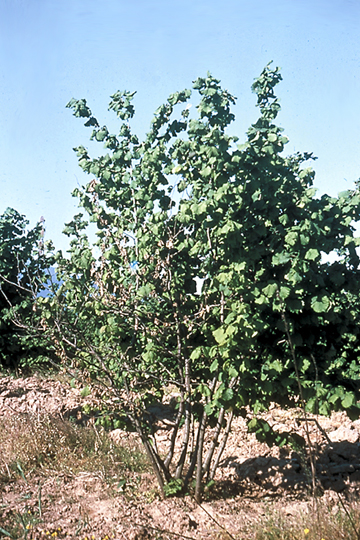
Bacterial canker | Hazelnut
DISEASE: Bacterial canker
HOST: Hazelnut (Corylus americana)
PATHOGEN: Pseudomonas syringae pv. avellanae
PATHOGEN SYNONYM: Pseudomonas avellanae
SOURCE: P. Psalidas
DISEASE: Bacterial fasciation (Leafy gall)
HOST: Dahlia
Dalhlia tubers with proliferation and leaf development.
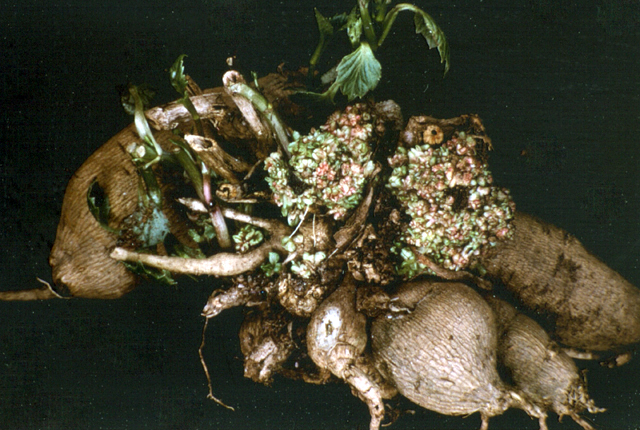
Bacterial fasciation (Leafy gall) | Dahlia
DISEASE: Bacterial fasciation (Leafy gall)
HOST: Dahlia (Dahlia sp.)
PATHOGEN: Rhodococcus fascians
SOURCE: M. Shurtleff
DISEASE: Bacterial fasciation (Leafy gall)
HOST: Dahlia
Bacterial fasciation of dahlia tubers.
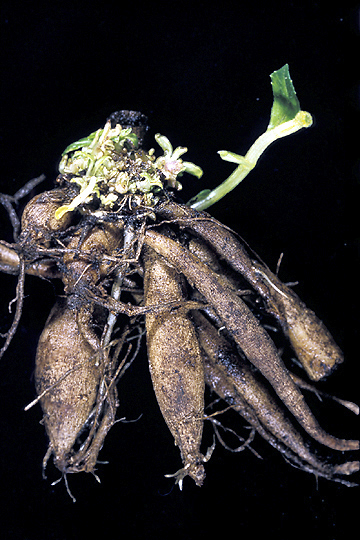
Bacterial fasciation (Leafy gall) | Dahlia
DISEASE: Bacterial fasciation (Leafy gall)
HOST: Dahlia (Dahlia sp.)
PATHOGEN: Rhodococcus fascians
SOURCE: H. van Hoof, M. Geesteranus
DISEASE: Bacterial rot
HOST: Dahlia
Longitudinal section of dahlia with discolored, rotted tissues.

Bacterial rot | Dahlia
DISEASE: Bacterial rot
HOST: Dahlia (Dahlia sp.)
PATHOGEN: Dickeya sp.
PATHOGEN SYNONYM: Erwinia chrysanthemi
SOURCE: J. Young
DISEASE: Crown gall
HOST: Dahlia
Crown gall of dahlia tubers. Note brownish, rough-surfaced galls, one of which shows rot. Galls often are infected by microorganisms that cause rot.
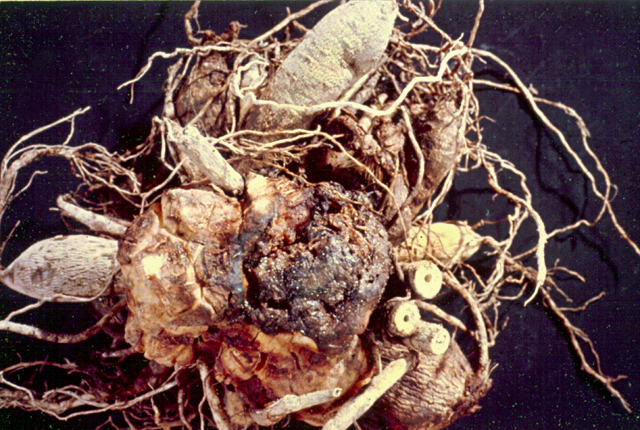
Crown gall | Dahlia
DISEASE: Crown gall
HOST: Dahlia (Dahlia sp.)
PATHOGEN: Agrobacterium tumefaciens
PATHOGEN SYNONYM: Rhizobium sp.
SOURCE: M. Shurtleff


